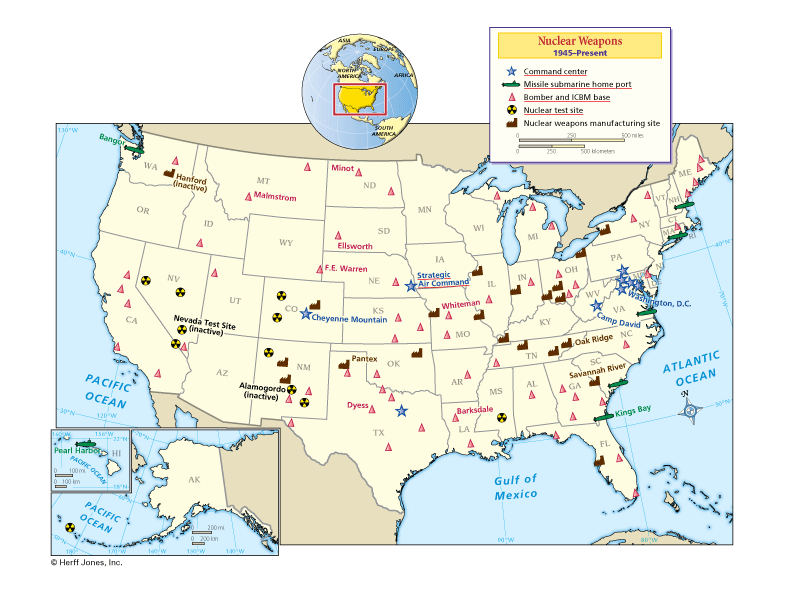
To prevent a surprise attack from crippling the government, several sites outside Washington, D.C., were built to perform the functions of the White House and Pentagon. DARPANET, which became the Internet, was created to communicate between these sites and military forces without being interrupted in the event of an attack.
Submarines carrying nuclear missiles continue to patrol the world's oceans. The submarines are very difficult to find, preventing an enemy from being able to destroy all of the country's nuclear weapons. Only the home ports of these submarines are shown.
Long-range bombers and inter-continental ballistic missiles (ICBMs) were capable of hitting any target around the world. ICBMs were stored underground in missile silos and could be launched almost immediately. Much of the U.S. bomber force was kept in the air or fueled on the ground, ready to attack on very short notice.
Before the Limited Test Ban Treaty in 1963, the U.S. tested many of its weapons in the atmosphere on islands in the Pacific Ocean. Nearly all tests since 1963 have been at the Nevada Test Site, about 65 miles outside Las Vegas.
The Strategic Air Command (SAC) maintained several planes called "Looking Glass," which could direct U.S. forces even if all ground communications were destroyed. At least one Looking Glass plane was always in the air between 1961 and 1990. The crews and aircraft were based at SAC headquarters near Omaha.